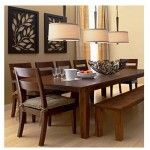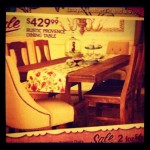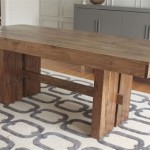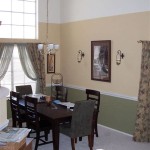Elevating Dining Spaces: The Impact of Recessed Lighting
Recessed lighting, also known as can lighting or pot lighting, has become a ubiquitous choice for modern homes, particularly within dining rooms. Its popularity stems from its ability to provide both functional and aesthetic benefits, contributing to a more inviting and visually appealing dining environment. By integrating light fixtures directly into the ceiling, recessed lighting offers a clean, unobtrusive look that complements a variety of interior design styles. This article explores the advantages of using recessed lighting in dining rooms, examining various design considerations, installation best practices, and the overall impact on ambiance and functionality.
The dining room serves as a focal point for family gatherings, celebratory meals, and everyday conversations. The lighting within this space plays a crucial role in setting the mood and enhancing the dining experience. Poorly chosen lighting can lead to eye strain, an uninviting atmosphere, and even negatively impact perceptions of food and décor. Recessed lighting, when implemented thoughtfully, can address these issues and create a more comfortable and aesthetically pleasing dining environment.
Creating Ambiance and Setting the Mood
Recessed lighting's versatility allows for the creation of a specific ambiance within the dining room. The ability to control the intensity and color temperature of the light emitted from recessed fixtures allows designers and homeowners to tailor the lighting to suit different occasions and preferences. For example, dimmable recessed lights can be used to create a warm, intimate atmosphere for romantic dinners or relaxed family gatherings. Conversely, brighter, cooler-toned lighting can be employed for more formal occasions or when focused tasks, such as reading or writing, are required.
The careful placement of recessed lights can also highlight specific features within the dining room, such as artwork, architectural details, or a beautifully set table. Strategic aiming of light beams can create visual interest and draw attention to desired focal points. In contrast, poorly planned lighting can create harsh shadows and an uneven distribution of light, detracting from the overall aesthetic of the space.
The use of multiple recessed lights, coupled with a dimmer switch, offers the flexibility to adjust the lighting levels throughout the day and evening. During daylight hours, dimmer settings can conserve energy while still providing adequate illumination. As evening approaches, the lights can be dimmed to create a softer, more relaxing atmosphere. This adaptability is a key advantage of using recessed lighting in dining rooms.
Color temperature is another critical factor to consider when selecting recessed lighting for a dining room. Warm white light (2700K-3000K) creates a cozy and inviting atmosphere, while cool white light (3500K-4100K) provides a more energetic and modern feel. The choice of color temperature will depend on the individual aesthetic preferences and the overall design of the dining room. Experimentation with different color temperatures is recommended to determine the optimal setting for the space.
Enhancing Functionality and Task Lighting
Beyond its aesthetic contributions, recessed lighting also provides essential functional benefits within the dining room. Effectively positioned recessed lights can provide even illumination across the entire table, ensuring that diners can easily see their food and engage in conversation. This is particularly important in dining rooms that lack natural light or have limited window space.
Recessed lighting can also be used to complement other lighting sources within the dining room, such as chandeliers or pendant lights. By providing a layer of ambient light, recessed lights can reduce the contrast between brighter and dimmer areas, creating a more balanced and comfortable visual environment. This is particularly important in dining rooms with high ceilings or complex architectural features.
Task lighting, which focuses on illuminating specific areas for specific activities, is also achievable through recessed lighting. For instance, recessed lights installed directly above a buffet or sideboard can provide ample illumination for serving food or preparing drinks. Similarly, recessed lights placed above a writing desk or workspace can provide the necessary light for focused tasks. This targeted lighting can significantly enhance the functionality of the dining room and make it a more versatile space.
When planning the placement of recessed lights for task lighting, it is important to consider the location of furniture and the activities that will be performed in each area. Proper positioning will ensure that the light is directed precisely where it is needed, minimizing shadows and glare. Adjustable recessed lights, also known as gimbal recessed lights, offer even greater flexibility in directing the light beam.
Furthermore, energy-efficient LED recessed lights offer significant cost savings and environmental benefits. LED lights consume considerably less energy than traditional incandescent or halogen bulbs, while providing comparable or even superior light output. They also have a much longer lifespan, reducing the need for frequent replacements. The initial investment in LED recessed lights is typically higher, but the long-term cost savings make them a worthwhile choice for most homeowners.
Design Considerations for Optimal Recessed Lighting Placement
The effectiveness of recessed lighting in a dining room is largely dependent on careful planning and precise placement. Factors such as ceiling height, room size, furniture arrangement, and existing architectural features must all be considered when determining the optimal layout for recessed lights. A poorly designed lighting plan can result in uneven illumination, harsh shadows, and an unappealing aesthetic.
A common guideline for spacing recessed lights is the "rule of thumb," which suggests that the distance between each light should be roughly equal to the ceiling height. For example, in a dining room with an 8-foot ceiling, the recessed lights should be spaced approximately 8 feet apart. However, this is just a general guideline, and the actual spacing may need to be adjusted based on the specific characteristics of the room.
In smaller dining rooms, fewer recessed lights may be needed to provide adequate illumination. Conversely, larger dining rooms may require more lights to ensure even coverage. It is essential to consider the wattage and beam angle of the chosen light fixtures when determining the number of lights required. Lower wattage bulbs and wider beam angles will generally require more lights to achieve the desired level of illumination.
The placement of recessed lights relative to furniture is also crucial. Avoid placing lights directly above dining chairs, as this can create unflattering shadows on faces. Instead, position the lights slightly off-center or use adjustable gimbal recessed lights to direct the light beam away from seating areas. Similarly, avoid placing lights too close to walls, as this can create a "wall-washing" effect that highlights imperfections in the wall surface.
Another important consideration is the presence of other light sources in the dining room. Chandeliers and pendant lights can serve as focal points and provide ambient lighting, while recessed lights can supplement these fixtures and provide additional task lighting. The key is to create a layered lighting scheme that combines different types of lights to achieve a balanced and harmonious effect.
Before installing recessed lights, it is highly recommended to create a detailed lighting plan that outlines the placement of each fixture, the wattage and beam angle of the bulbs, and the wiring configuration. This plan will serve as a roadmap for the installation process and help to ensure that the finished result meets expectations. Consulting with a qualified electrician or lighting designer is also advisable, particularly for complex lighting projects.
Finally, consider the trim style of the recessed lights. The trim is the visible portion of the fixture that surrounds the light bulb and sits flush with the ceiling. Different trim styles can complement various interior design aesthetics. Common trim styles include baffle trims, which reduce glare; reflector trims, which maximize light output; and adjustable trims, which allow for directional aiming of the light beam. The choice of trim style will depend on the desired aesthetic and functional requirements of the lighting design.
By carefully considering these design factors, homeowners and designers can effectively utilize recessed lighting to create a dining room that is both aesthetically pleasing and functionally efficient. The versatility and adaptability of recessed lighting make it a valuable tool for enhancing the dining experience and creating a welcoming and inviting atmosphere.

How To Select Recessed Lighting For The Perfect Design Rensen House Of Lights

The 101 On Recessed Lighting Part 1 Lightology

How To Layout Recessed Lighting In 4 Easy Steps Lightup

Dining Rooms Kitchen Recessed Lighting Design Ideas

How To Layer Dining Room Lighting 1stoplighting

Dining Room Lighting

3 Things You Need To Know About Recessed Lighting Stewart

Dining Room With Recessed Lighting Ceiling Check More At Http Www Bonsaikc Com

Traditional Dining Room Remodel Oak Flooring Crown Molding Recessed Lighting Other By Taylor Bryan Company Houzz Ie

How To Choose The Best Types Of Kitchen Lighting For Your Home Angi








